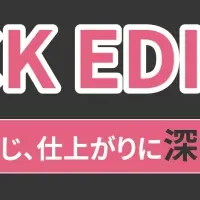
The Rigid Packaging Market: Aiming for $376.75 Billion by 2032 Amid Rising Sustainability Demand
The Soaring Growth of the Rigid Packaging Market
As we navigate through 2023, the global rigid packaging market finds itself at a transformative juncture. Valued at around $228.19 billion, projections now suggest a substantial leap to $376.75 billion by 2032. This surge points to a compound annual growth rate (CAGR) of 5.64% between 2024 and 2032, reflecting the mounting significance of rigid packaging across several vital industries such as food and beverage, healthcare, and personal care.
The Drivers Behind Market Growth
Several integral drivers are catalyzing this impressive growth trajectory. First and foremost, the food and beverage industry is heavily reliant on rigid packaging to protect products, extend their shelf life, and uphold safety standards. The increasing prevalence of ready-to-eat meals and bottled beverages has heightened the demand for durable and efficient containers.
Technological advancements in packaging are also steering the market. Innovations like smart packaging and enhanced barrier materials hold the potential to meet the evolving consumer preferences for convenience and freshness. Notably, Modified Atmosphere Packaging (MAP) is gaining momentum, particularly in the food sector, where it mitigates oxygen exposure and maintains quality during extended timeframes.
Another vital influence is the escalating shift towards sustainability. With stricter regulations emerging globally and a growing consumer consciousness towards environmental impacts, there is an inclination toward recyclable and biodegradable packaging solutions. For instance, companies are now focusing on materials like paper and paperboard as eco-friendly alternatives to traditional plastics. Reports indicate that adopting recycled PET can diminish carbon emissions by nearly 70% in comparison to virgin plastic.
The healthcare sector, with its rising demand for pharmaceuticals, enhances the rigid packaging market further. Integrity in product safety is paramount, necessitating tamper-proof solutions such as blister packs and glass vials, especially in an aging population amidst increasing chronic disease incidences.
Keys to Market Opportunities
Within the expanding rigid packaging sector lie numerous avenues for growth. The escalating concern for environmental wellness correlates with the demand for sustainable practices. This presents firms that invest in eco-friendly packaging alternatives, such as recyclable plastics and paperboard, with opportunities to foster consumer loyalty and comply with evolving global guidelines.
Technological advancements herald exciting expansion potential, particularly in smart packaging innovations that preserve freshness and improve user convenience in critical segments like food and healthcare.
Additionally, the meteoric rise of the e-commerce sector brings forth a necessity for robust, tamper-evident packaging, opening new pathways for rigid packaging to secure products throughout their transit.
What to Expect in Market Segmentation
The growth can also be observed across varying segments within the rigid packaging market:
- - Material Type: Plastic remains the frontrunner due to its lightweight, durability, and broad applicability in beverages, food, and personal care items. Following closely is glass, known for its premium appeal but noted for its fragility. Metal, including aluminum and steel, is also significant due to durability, especially in beverages. Paper and wood materials are gaining traction in sustainability-focused initiatives where recyclability aligns with consumer preferences.
- - Product Type: Products span across bottles and jars, cans and tins, boxes and cartons, and specialized trays and tubs used predominantly in ready-to-eat meals. Moreover, drums and barrels serve crucial roles in industrial applications, particularly for chemical storage.
- - End-Use Industry: The highest demand resides in the food and beverage sector, succeeded by pharmaceuticals and personal care innovations that emphasize both aesthetic appeal and functionality.
Regional Dynamics
Analyzing growth through regional lenses is equally crucial:
- - North America leads due to a robust industrial framework, particularly in the food and beverage industry. Over half of U.S. consumers favor eco-friendly packaging, intensifying demand for recyclable options.
- - Europe's heightened sustainability regulations stimulate market dynamics as companies align with the EU goals for plastic recycling, focusing on advanced glass and metal packaging solutions.
- - The Asia-Pacific region is demonstrating the fastest growth, fueled by industrialization and higher disposable incomes, reflecting significant consumer spending in the food and beverage space.
- - In Latin America, the packaging demand is contouring along the lines of food exports, particularly in meat and agriculture.
- - Lastly, the Middle East and Africa are seeing increased investments due to diversifying economies and the rising healthcare market needing reliable pharmaceutical packaging.
Conclusion
The rigid packaging market is poised for a transformative trajectory, driven by advancing technology, sustainability concerns, and evolving consumer demands. Businesses that seize these trends can position themselves favorably within this expanding landscape. Companies like Amcor and Berry Global are at the forefront, continually innovating to meet emerging market needs, highlighting the importance of adaptability in a rapidly changing economic environment.
To learn more about tailored growth strategies, businesses are encouraged to delve deeper into market reports that provide further insights into specific trends and competitive analysis.
Topics Consumer Products & Retail)










【About Using Articles】
You can freely use the title and article content by linking to the page where the article is posted.
※ Images cannot be used.
【About Links】
Links are free to use.